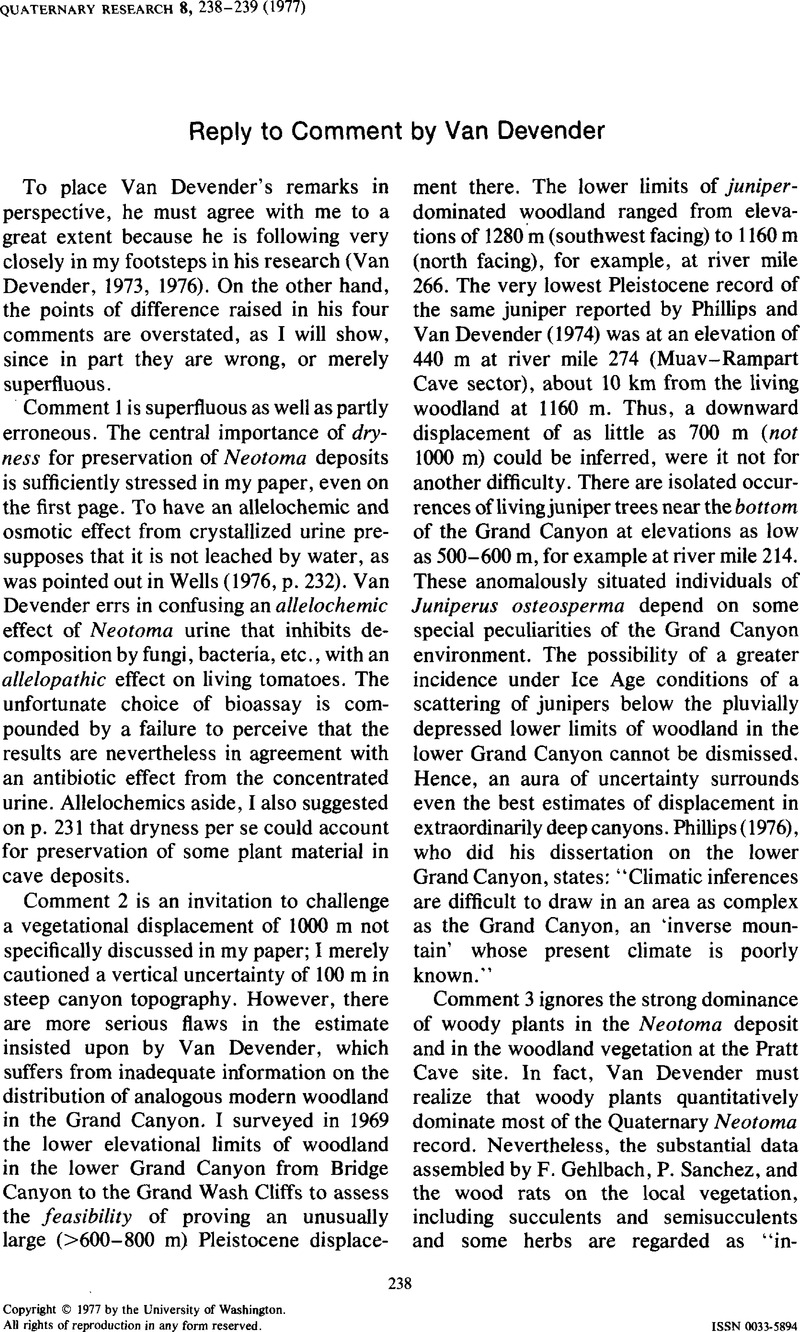Crossref Citations
This article has been cited by the following publications. This list is generated based on data provided by Crossref.
Jacobson, George L.
1988.
Vegetation history.
p.
3.
Davis, Owen K.
1990.
Caves as sources of biotic remains in arid western North America.
Palaeogeography, Palaeoclimatology, Palaeoecology,
Vol. 76,
Issue. 3-4,
p.
331.





